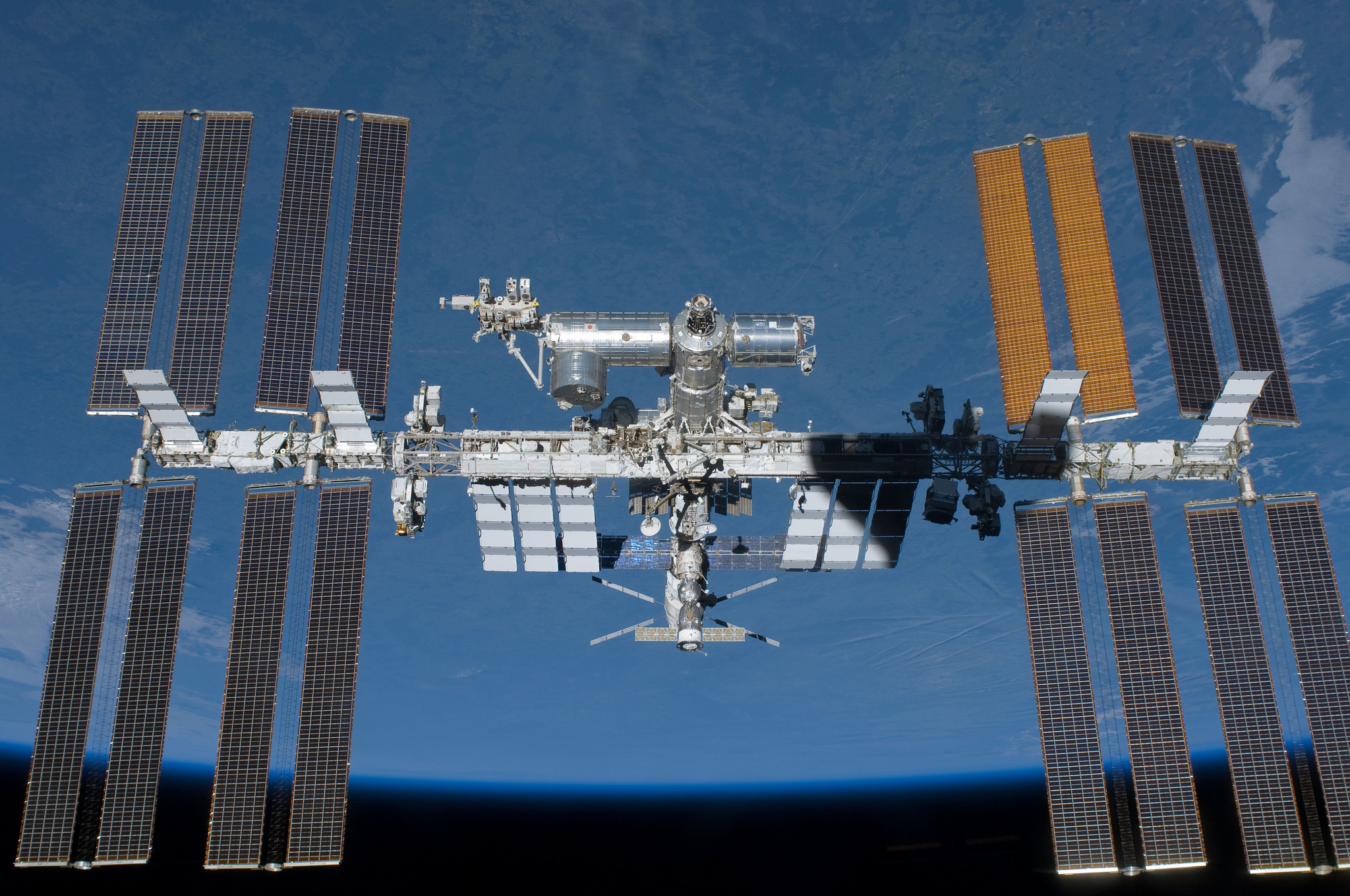Small Air Leak Detected on International Space Station

Update for 5:45 p.m. EDT: Astronauts are fixing the small air leak on the International Space Station. See their progress here. To find out more on a potential cause of the leak, read this micrometeoroid report.
Astronauts at the International Space Station are working to repair a small leak that was discovered at the orbiting laboratory Wednesday night (Aug. 29). While the leak caused a slight drop in cabin pressure, it did not pose an immediate danger to the astronauts currently living aboard the station, NASA officials said.
Flight controllers on Earth began to notice changes in cabin pressure around 7 p.m. EDT (2300 GMT), while the six crewmembers of Expedition 56 were sleeping, NASA officials said in a statement today (Aug. 30).
Because the pressure loss was "very small," flight controllers determined that the astronauts and cosmonauts "are in no danger," officials with the European Space Agency (ESA) said in a separate statement. [Expedition 56: The Space Station Mission in Photos]
After the crew awoke today, flight controllers at NASA's Johnson Space Center in Houston and the Russian Mission Control Center near Moscow alerted them to the problem so the astronauts could begin working to pinpoint the leak's location.
They determined that the leak is in the Soyuz MS-09 spacecraft, which is docked at the Rassvet module on the Russian segment of the space station, Dmitry Rogozin, director general of Russia’s space agency Roscosmos, told Sputnik News. Rogozin told the Russian news agency that the crewmembers found a microfracture that may have been created by a micrometeoroid impact.
"The leak has been isolated to a hole about two millimeters in diameter in the orbital compartment, or upper section, of the Soyuz MS-09 spacecraft," NASA officials said in a subsequent statement about the status of the repair work. "The rate of the leak was slowed this morning through the temporary application of Kapton tape at the leak site. Flight controllers are working with the crew to develop a more comprehensive long-term repair."
Get the Space.com Newsletter
Breaking space news, the latest updates on rocket launches, skywatching events and more!
The Soyuz MS-09 spacecraft launched to the space station in June with Expedition 56/57 crewmembers Serena Auñón-Chancellor of NASA, Russian cosmonaut Sergey Prokopyev and ESA astronaut Alexander Gerst. It is scheduled to return to Earth in December with the same three-person crew on board. "The ship will be saved with the use of the repair kit," Rogozin told Sputnik News.
"The crew are healthy and safe with weeks of air left in the International Space Station reserves," ESA officials said in their statement. Additional updates will be posted on NASA's International Space Station blog as more information becomes available, NASA spokesperson Dan Huot told Space.com in an email.
This is not the first time a small leak has sprung up on the space station, which has been continuously inhabited by rotating crews since 2000. Another leak occurred in the station's Harmony module (which is located on the U.S. segment) in 2007 during Expedition 16. NASA officials said at the time that this leak was no cause for concern.
The station's current Expedition 56 crew includes NASA astronuats Drew Feustel, Serena Auñón-Chancellor and Ricky Arnold; Russian cosmonauts Oleg Artemyev and Sergei Prokopyev; and German astronaut Alexander Gerst, of the European Space Agency. Feustel commands the crew.
Editor's Note: This article has been updated with new details about the location and cause of the leak.
Email Hanneke Weitering at hweitering@space.com or follow her @hannekescience. Follow us @Spacedotcom, Facebook and Google+. Original article on Space.com.
Join our Space Forums to keep talking space on the latest missions, night sky and more! And if you have a news tip, correction or comment, let us know at: community@space.com.

Hanneke Weitering is a multimedia journalist in the Pacific Northwest reporting on the future of aviation at FutureFlight.aero and Aviation International News and was previously the Editor for Spaceflight and Astronomy news here at Space.com. As an editor with over 10 years of experience in science journalism she has previously written for Scholastic Classroom Magazines, MedPage Today and The Joint Institute for Computational Sciences at Oak Ridge National Laboratory. After studying physics at the University of Tennessee in her hometown of Knoxville, she earned her graduate degree in Science, Health and Environmental Reporting (SHERP) from New York University. Hanneke joined the Space.com team in 2016 as a staff writer and producer, covering topics including spaceflight and astronomy. She currently lives in Seattle, home of the Space Needle, with her cat and two snakes. In her spare time, Hanneke enjoys exploring the Rocky Mountains, basking in nature and looking for dark skies to gaze at the cosmos.









